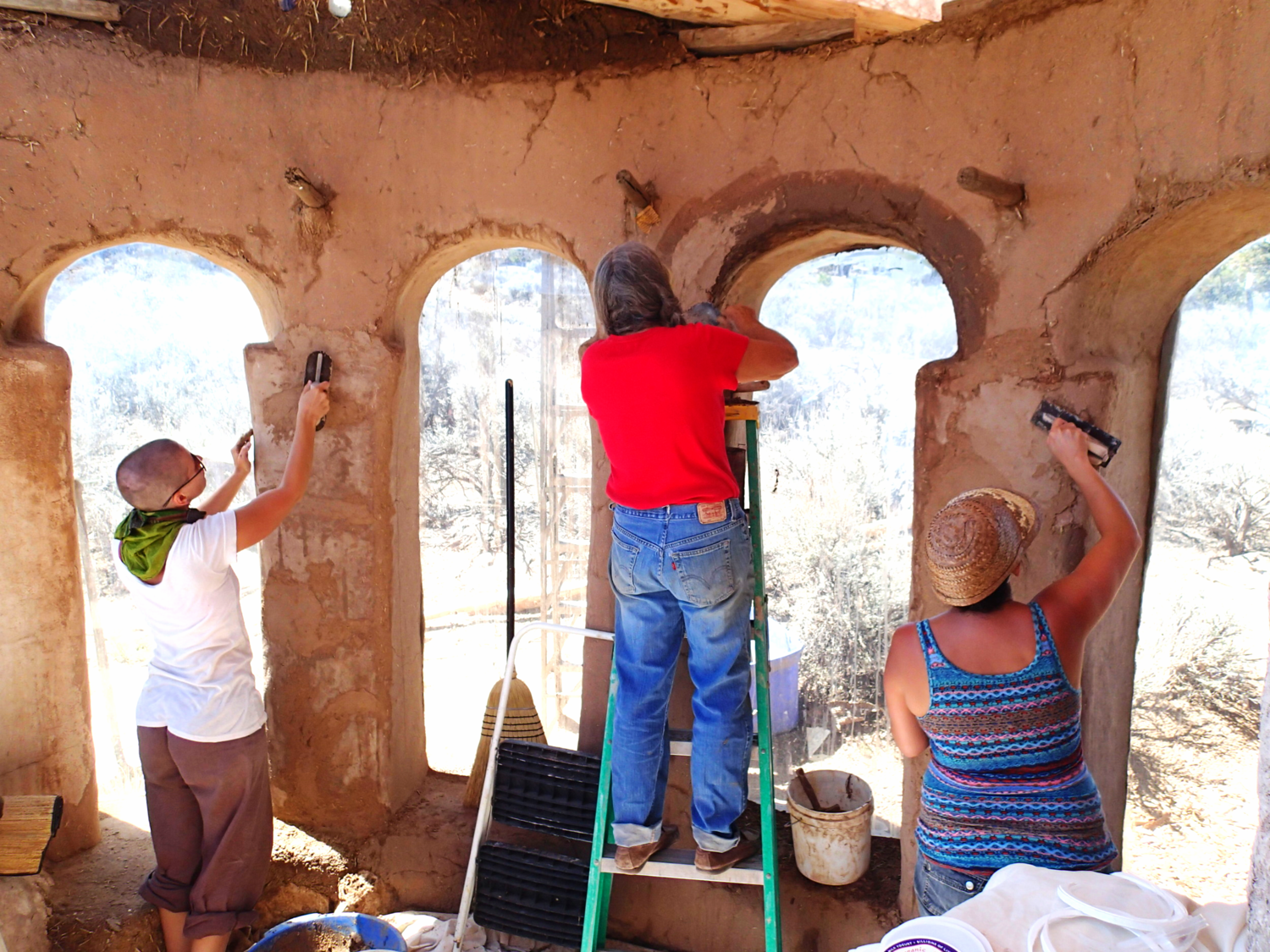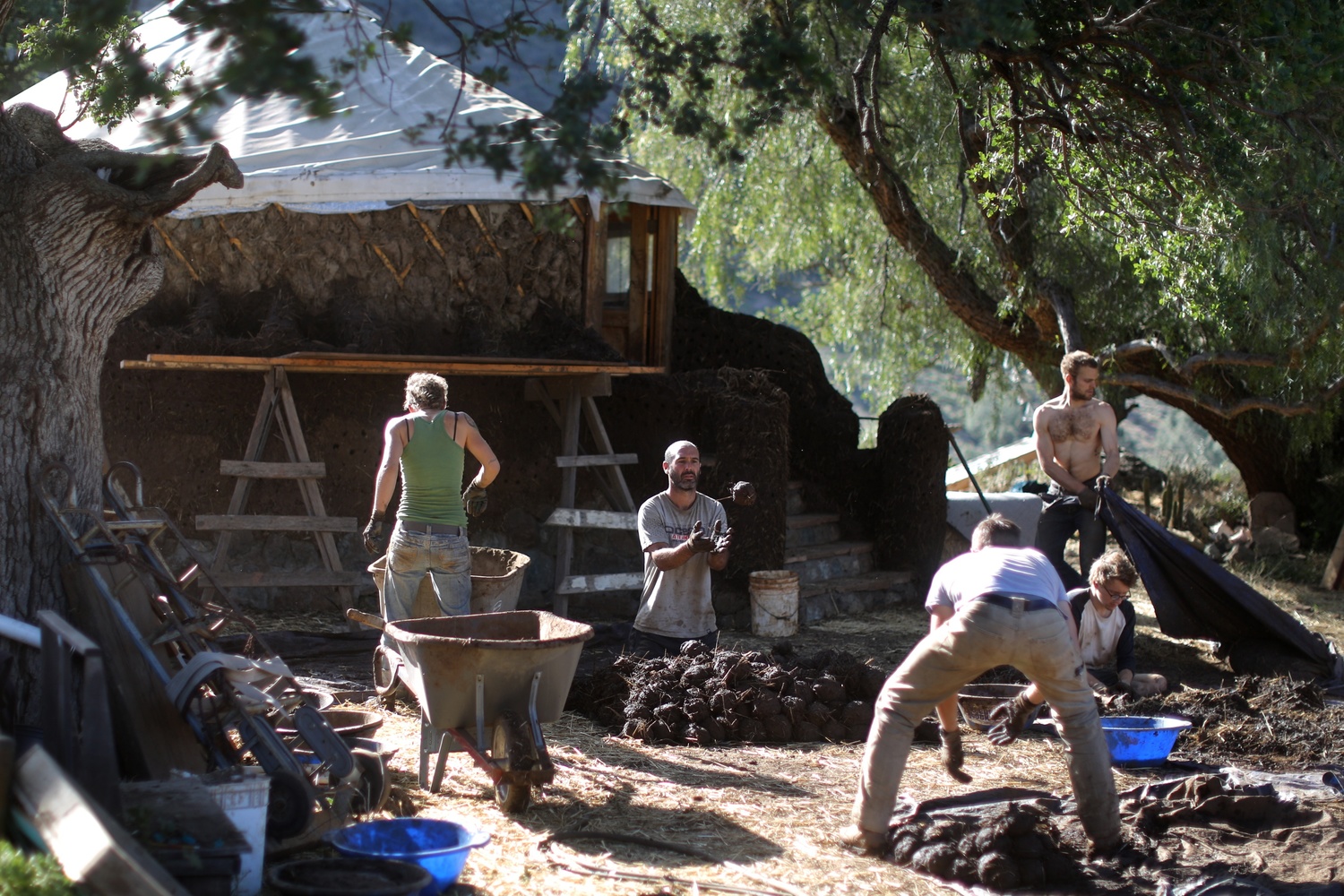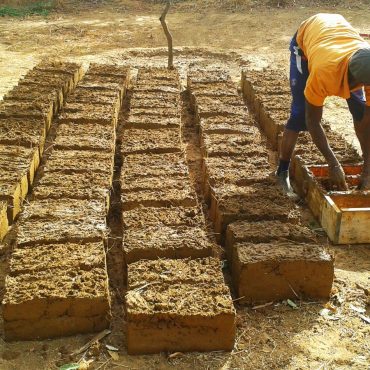
Earthen Plasters: The healthiest and most beautiful way to finish your home
No matter what material you build your house with, the finishes will always be the most visible part both inside and out. For thousands of years people have used natural […]

Many of the misconceptions about the cost of natural buildings come from the large number of variables that have to be considered when planning a project. With industrial construction, detailed plans call for industrial products which usually cost roughly the same amount everywhere in the country, and in some cases, everywhere in the world. With natural building, we try to use resources that we can find in the immediate area which might be free or very cheap, but we have to consider transportation and labor costs to extract, harvest or process those materials. Because of the popularity of natural building and the fact that many people are willing to pay to learn how to build with natural materials, there is also the option to host a workshop or even use volunteer labor to help complete your project, but there are many considerations that come with these options as well. In this article we’ll help you understand many of the most important things that will determine the real cost of your project and help to correct some of the bad information out there that could completely throw off your budget.
How popular articles can mislead you
For years now, attention-grabbing posts about cute little natural houses have been popping up on blogs and social media sites. These articles claim that the houses cost as little as $5,000 or less! How in the world do they make those adorable little houses for only a few thousand dollars? Well the short answer is that they don’t. Though I’m not sure how all of those builders are calculating their costs, I have actually visited a number of those impossibly cheap structures and I can tell you that there are a lot of factors that didn’t get listed in those prices. In general, you are seeing a summarized cost of materials, and the reason why the cost is so low is because they either harvested the materials from their land, or they took the time to salvage recycled and abandoned resources from other sites. On the one hand, I am a huge advocate for re-purposing materials, but on the other hand, those “free” resources aren’t as free as they seem when you factor in labor, searching, and transportation costs. All of the hours that it takes to make phone calls and browse online to find free and recycled or salvaged materials should count toward the total cost. The gas money to haul it all to your site also counts. Opportunity cost also counts. The building didn’t cost $2,000 if you spent all your time for three years building it. At the very least (unless you’re retired) you need to count the three years of lost wages into the equation.
The good news is that a small house for a few thousand dollars can be achieved, but only if you build everything yourself, have the skills to do it, and salvage a majority of the materials. Kata of Earthen Built, a natural building company on Vancouver Island, explained it really well when she said. “The rule written in stone is that you get two of the following options: Low Cost, High Quality, Fast.”
Below we’ll talk about the main factors in a construction quote that will get you the most accurate outcome.
Asking the right questions
One of the most frequent questions I get asked is, how much does a natural home cost? That’s a perfectly legitimate request, and while I understand the desire to get a quick and clean quote on such a big investment like a house, there are a lot of follow up questions we need to ask in order to give you anything close to an accurate estimate. If you want to get a good idea of what you need to consider before you start budgeting for a home, take a look at the list of questions below



This is a great place to start, but we’ll also need to research the price of certain materials and their transportation, as well as the price of labor where you’ll be building (this can vary significantly around the world).
Volunteers vs. professional labor
As natural building continues to gain in popularity, new possibilities are constantly emerging for ways to find willing workers and complete a project. Every day there are students looking to learn how to work with natural materials and even professionals hoping to expand their skills via work-trade agreements. At the same time there are ever more options for companies and artisans that offer high-level skill sets and services in design, construction, and landscaping. While it may be possible to save money by organizing a workshop for students or by organizing volunteers, there are a lot of factors to consider when deciding if this is the right option for you.
Volunteers/Students

There are many natural building groups and professionals now that offer courses and workshops with hands on experience for people who want to learn to build for themselves. Many of them offer their services to clients who want have small structures built on their own site and they will tell you that you can save a ton of money by hosting a workshop and having your project built by students and volunteers. While I don’t mean to suggest that this is not possible, there are some things you should know before hosting a workshop.
People who view volunteers and students as “free labor” are setting themselves up for disappointment. With this mindset, often two things will happen. First, the volunteers will be pressed to work as much as possible. Second, the work will be criticized for being less-than-professional quality and for progressing an inefficient pace. It’s very important to understand that volunteers and students are primarily there to learn new skills and gain experience, and if they are pushed to work at the expense of either of those things, they will quickly start to feel exploited and lose motivation to participate.
Another key thing to understand is that the satisfaction and motivation of your helpers is directly related to the comfort of their working/living environment. I can’t think of a single example of a good workshop that failed to provide good food and accommodation for the students. For this reason, volunteer and student labor is an exchange of services, and if you want to hold on to the willingness and motivation of the people working for you, the investment on your part will equal or exceed what you expect of them in return. Chances are you’re going to want to feed your volunteers and give them at least something in return (a place to stay, activities on days off, etc.). Maybe you’ll give them instruction hours to help them build their skills, or maybe you’ll trade your labor to them in a future project. Either way, all that counts toward the final cost of the project.
I have seen quite a few projects get started with a crew of volunteers who are taking a cob or other natural building workshop and the owners are ambitious in thinking that the whole building will get done for only the cost of materials in just a few weeks. What always happens is that after about a week of hard work, the volunteers begin to tire and progress starts to slow. In many cases the instructor promised a ton of hands on experience during the workshop that never ends up happening because the project didn’t advance fast enough to start working on the roof or the plasters and so everyone gets a bit discouraged. The workshop ends with a half (or less) finished building and the owners didn’t budget for finishing the building without free labor, so the project either stalls for a long time or gets gradually abandoned. The more irresponsible instructors post all the pictures from the course advertising a successful workshop while the students go home after paying more than a thousand dollars without the skills or training they need to build a descent home.
You can avoid a result like this by having realistic expectations of your students and by communicating clearly and in detail with the instructor who is leading the course. Workshops can provide great benefit for everyone involved, but you’ve got to do your homework and plan accordingly.
Professional Labor

If you hire one descent worker, who is unskilled, a fair wage for that person is $15 an hour (here in the USA in 2016, but that can vary significantly around the world). To only have that one person working for one month will cost a bit more than $2,500. That money is without a single cost of materials or transportation to your site. I can also guarantee you that a single unskilled worker won’t be able to build a whole house (of any value) in one month.
When you start looking at skilled labor and professional teams, the price per person can double or more, but before discounting professional labor because of the significant cost, you should look at all the other ways that money is saved by hiring skilled and experienced people. Chances are that the project will be completed in a fraction of the time, at a high quality, and with few or no mistakes that can waste time and materials. These benefits can often justify or exceed the costs of hiring the team. Especially if you don’t have experience in construction, hiring the help of a professional, even just to consult, can help you make sound choices that could mean the difference between a well-built or a poorly-built home.
Making the Right Cuts
With all of those myths dispelled and the complexity of good budgeting revealed, some people may feel disheartened if they had their sights set on a home for a few thousand dollars. However, there are still numerous ways to trim down the costs of building. For example, if you can tap into the immense waste stream that comes from commercial construction, which includes perfectly good materials, you could potentially aquire a majority of your materials for only the cost of transportation. It’s also important to know that not all ways of cutting costs are worth-while. For example, if you cut costs on your electrical system and end up having a dark house with no electrical outlets, did you really save anything, or are you just going to have to go back and install the electrical when you have more money? If you cut corners on installing your fireplace and accidentally burn down the home, do you count the cost to rebuild in the total? Be sure that the ways in which you’re saving money are good for the longevity of your project, or you’ll likely end up spending more down the line on repairs and replacements.
Another bit of good news though is that even with a more realistic budget you’re probably getting an incredible value. Even though it’ll likely cost 10-15 times the misleading cost of 1-3k for a small house that is built right, 20-45k is still incredibly cheap when compared to most conventional buildings and is a great investment. If more people were better informed about the reality of budgeting it would help to prevent the all too often abandonment of projects due to a lack of proper planning.
Tagged as: natural building, myth busting, Articles.

No matter what material you build your house with, the finishes will always be the most visible part both inside and out. For thousands of years people have used natural […]



Copyright Regenerative Skills 2021
Lidwine on February 23, 2020
Great article thank you